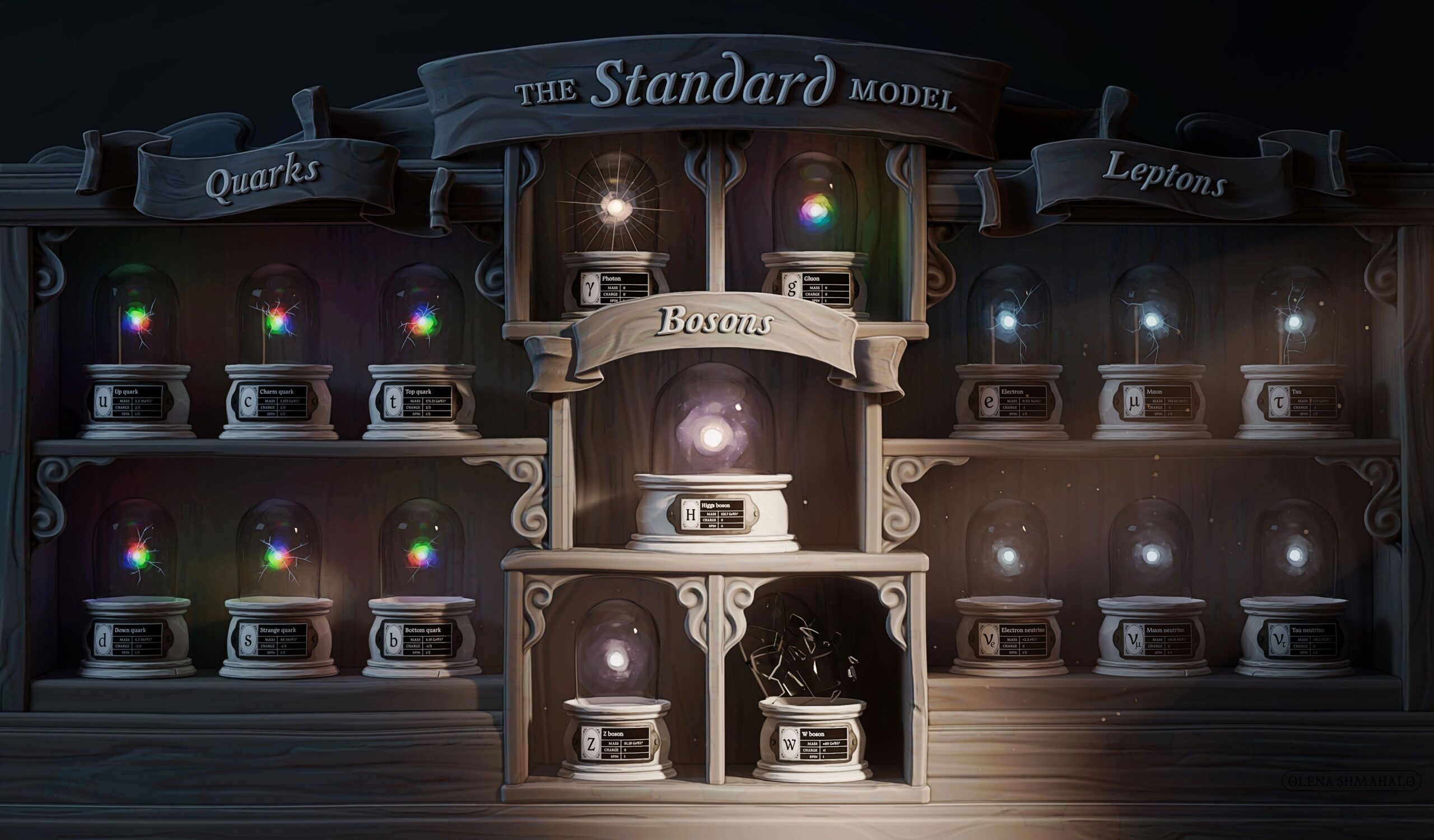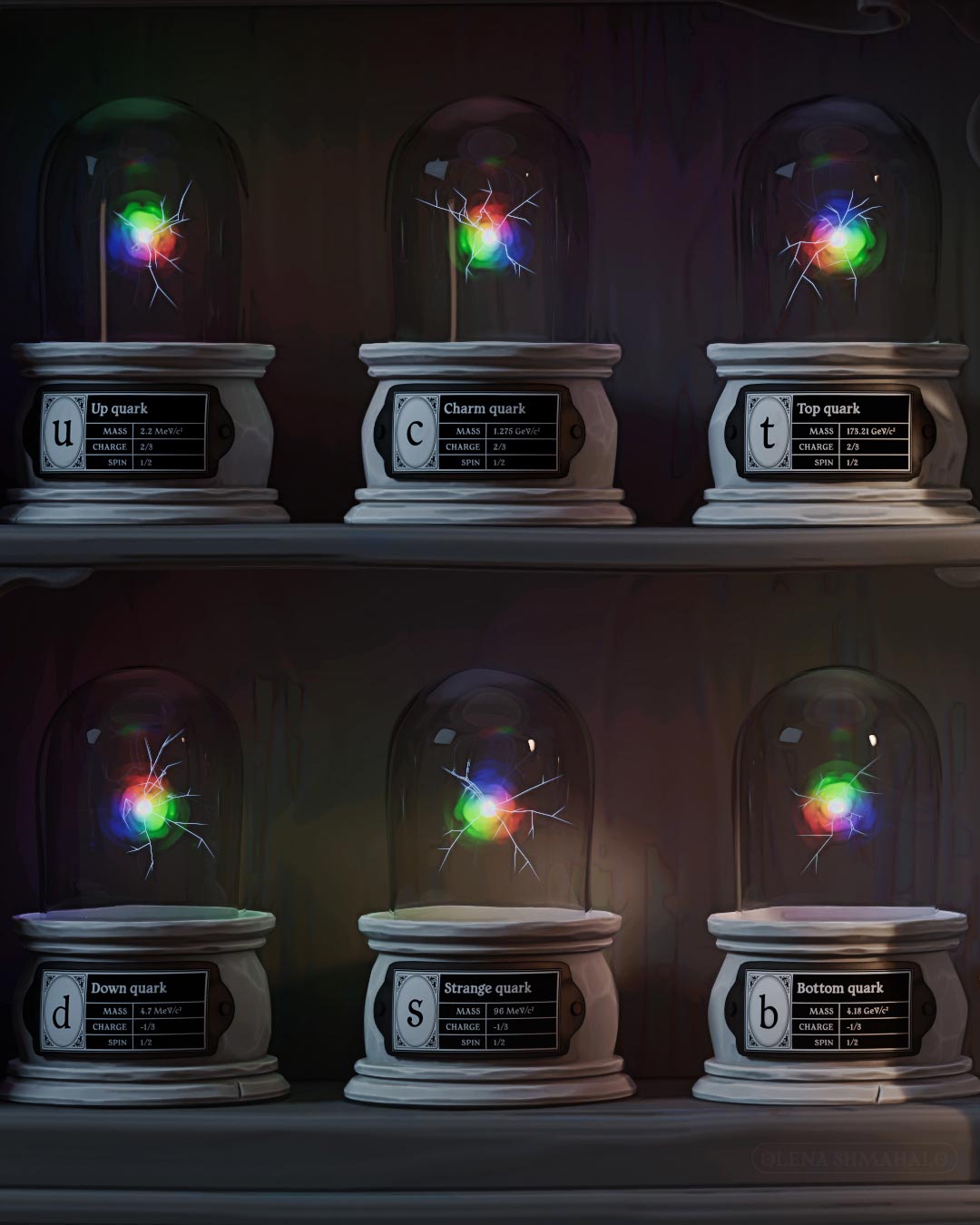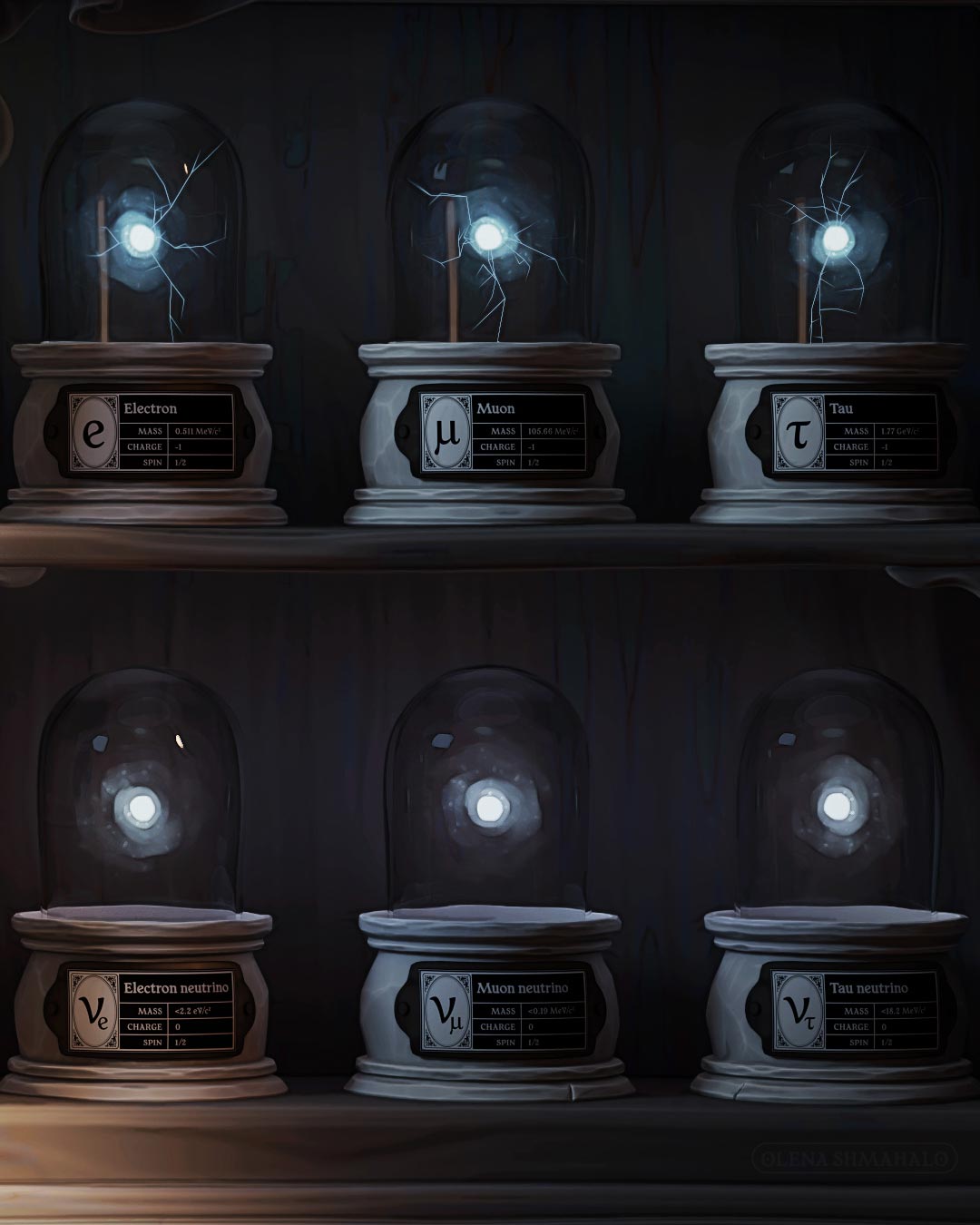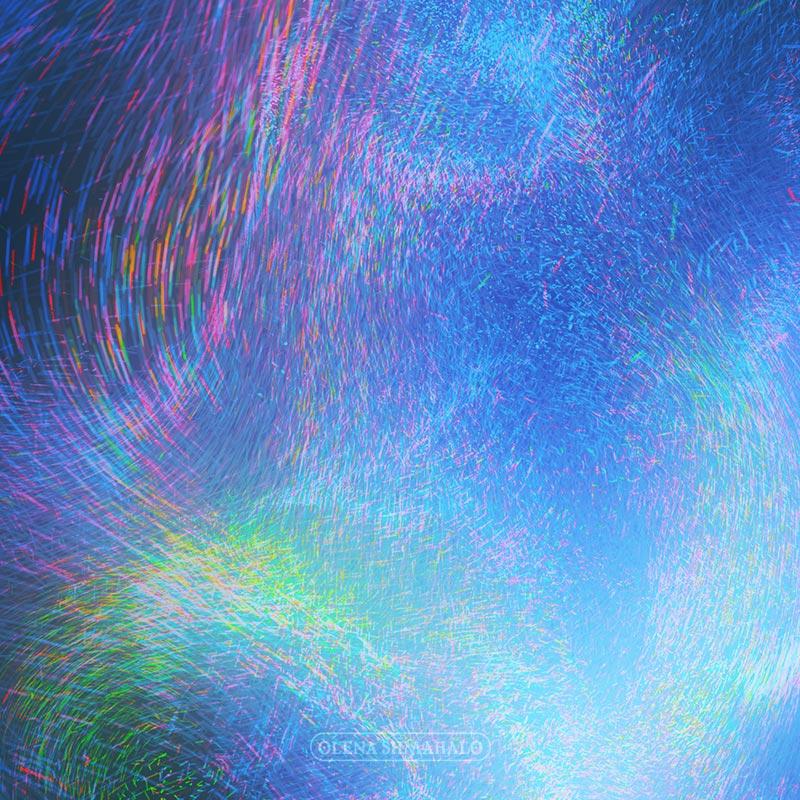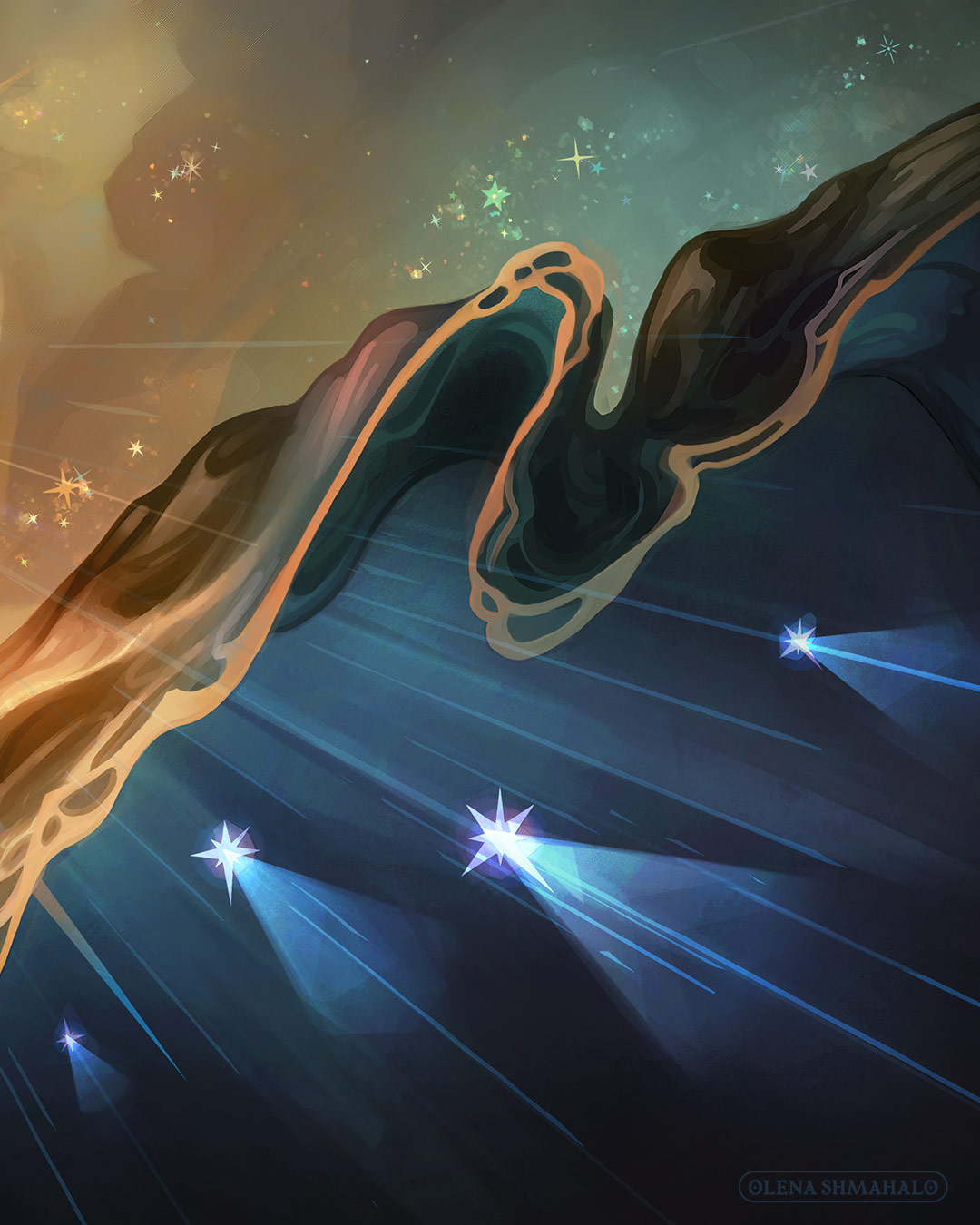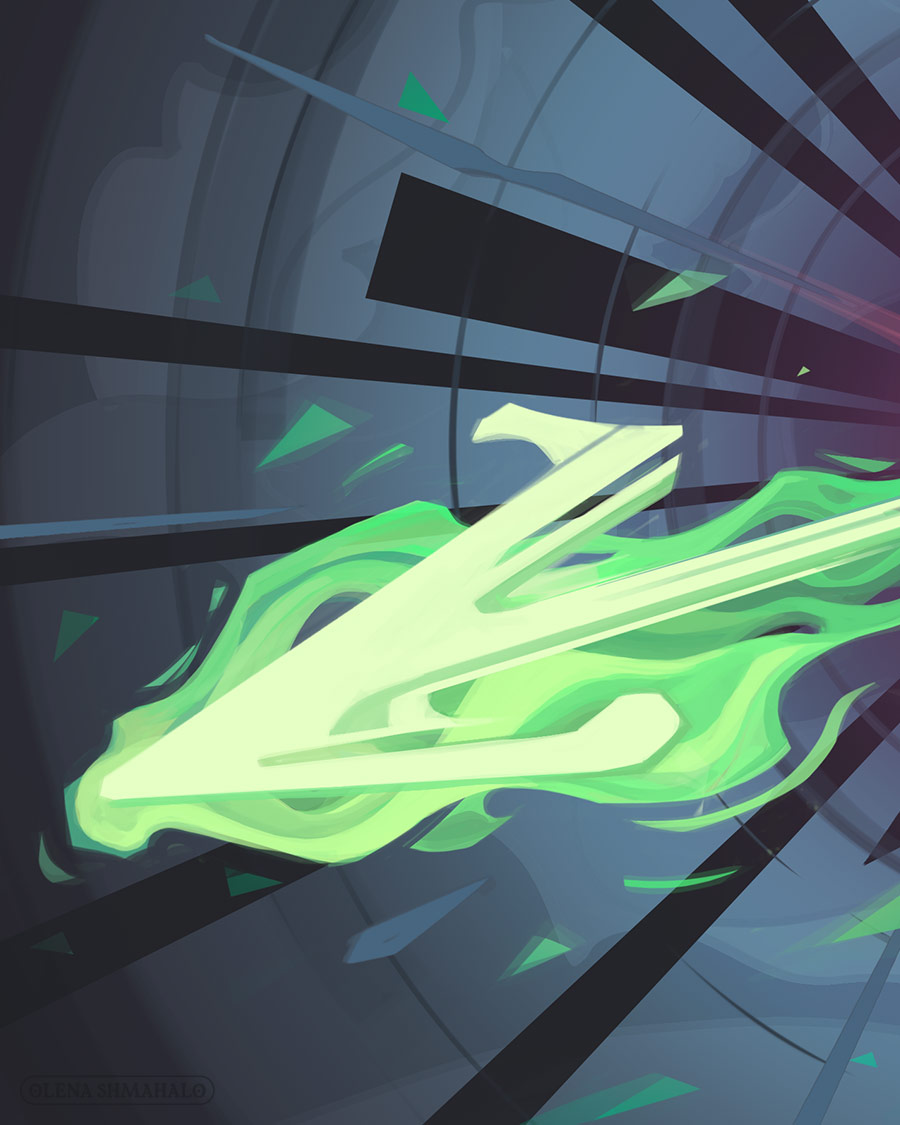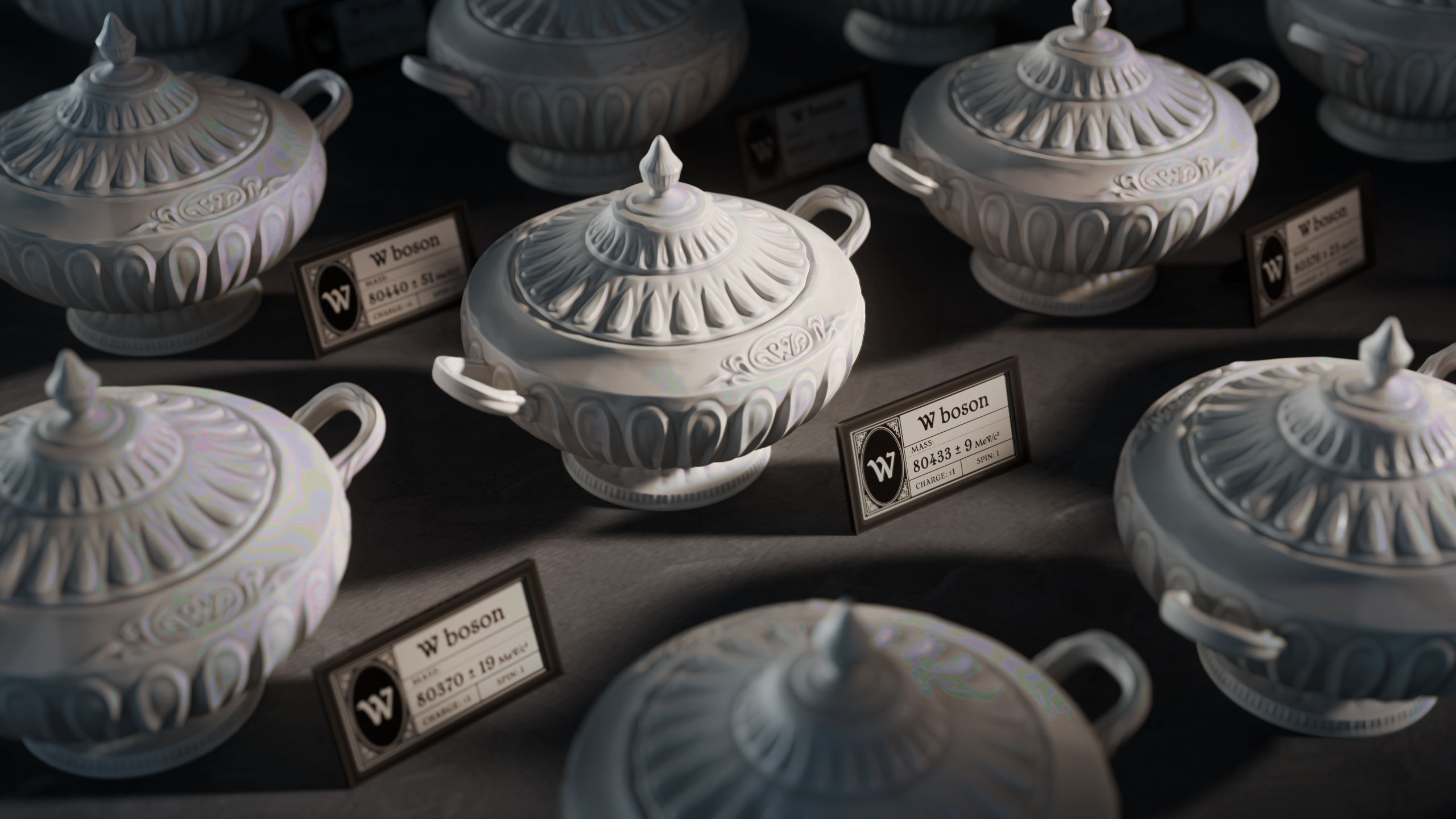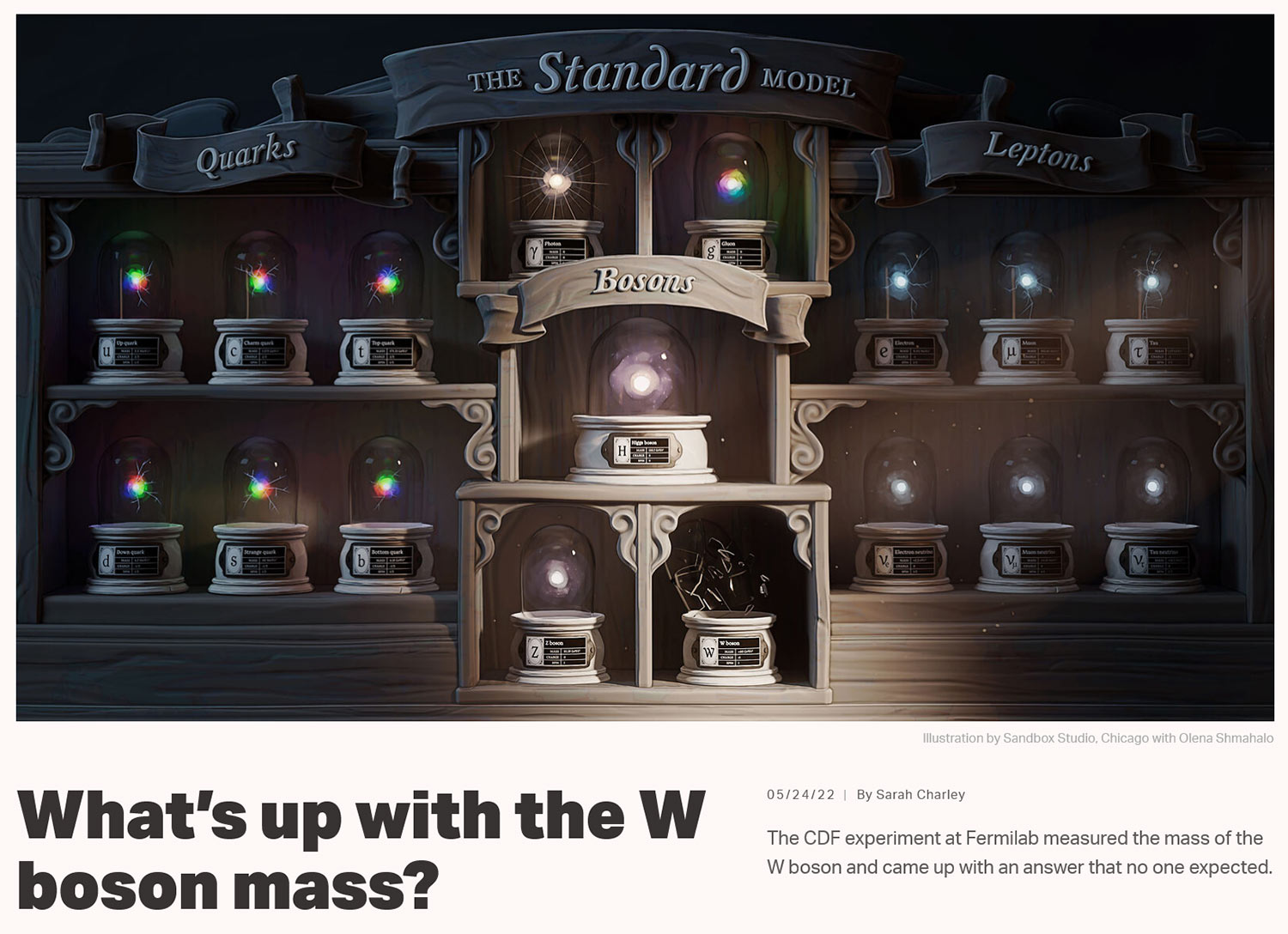A Curiosity Cabinet of Particle Physics
Editorial Science Illustration • Symmetry Magazine • 2022
A bit like an antique cabinet of curiosities, the Standard Model of particle physics is meticulously organized — each particle in its designated place. But what happens if one doesn’t fit?
FOR
Symmetry Magazine / Sandbox Studio, 2022. Thanks to AD Michael Branigan.
WORK
Concepts, 3D modeling / illustration, painting, graphic design
TOOLS
ZBrush, C4D, Rizom UV, Clip Studio Paint, Ps & Ai
INFO
3D illustrations for Symmetry Magazine article: What’s up with the W boson mass?
Particle physics is one of my favorite topics to learn & create visuals about. I reimagined the Standard Model in the form of a stylized, antique curiosity cabinet (or wunderkammer) with particles neatly arranged and held in place by cloches (some sort of aetherpunk magitech devices, undoubtedly). The W boson — too massive and fast — has just broken out of its bell jar.
The cabinet's design reflects the particles relations to one another, though with some limitation by the landscape format. Here's a good, short blog post (unaffiliated) about the various shapes of Standard Model graphics. And the most recent, scientifically-accurate iteration (interactive 3D model and art direction by me) in this longer explainer by Natalie Wolchover: A New Map of All the Particles and Forces.
Close-ups: Quarks and Leptons
Quarks have the usual properties: electric charge, mass, spin. And a strange fourth one, "color charge", that has little relation to the common meanings of either word. Rather, it refers to strong force interactions — the force that holds quarks together (like glue, ergo "gluons", the strong force carriers) to form hadrons.
Physicist Murray Gell-Mann coined the term color and named the quark itself, inspired by lines from James Joyce's novel, Finnegan's Wake:
Three quarks for Muster Mark!
Sure he hasn't got much of a bark
And sure any he has it's all beside the mark.
Quarks change color (red, blue, or green) when emitting or absorbing gluons. Their combination, as inside of protons, results in a color-neutral state that figuratively mimics the fusion of RGB in light: colorless, or "white".
Related project: Inside a Proton Particle: The Proton Sea
Leptons, on the other hand, do not interact with the strong force. The charge-less neutrinos are particularly famous for not interacting with very much at all. A couple of related projects about these subatomic ghosts:
Screenshot of the article on symmetrymagazine.org
© Olena Shmahalo
